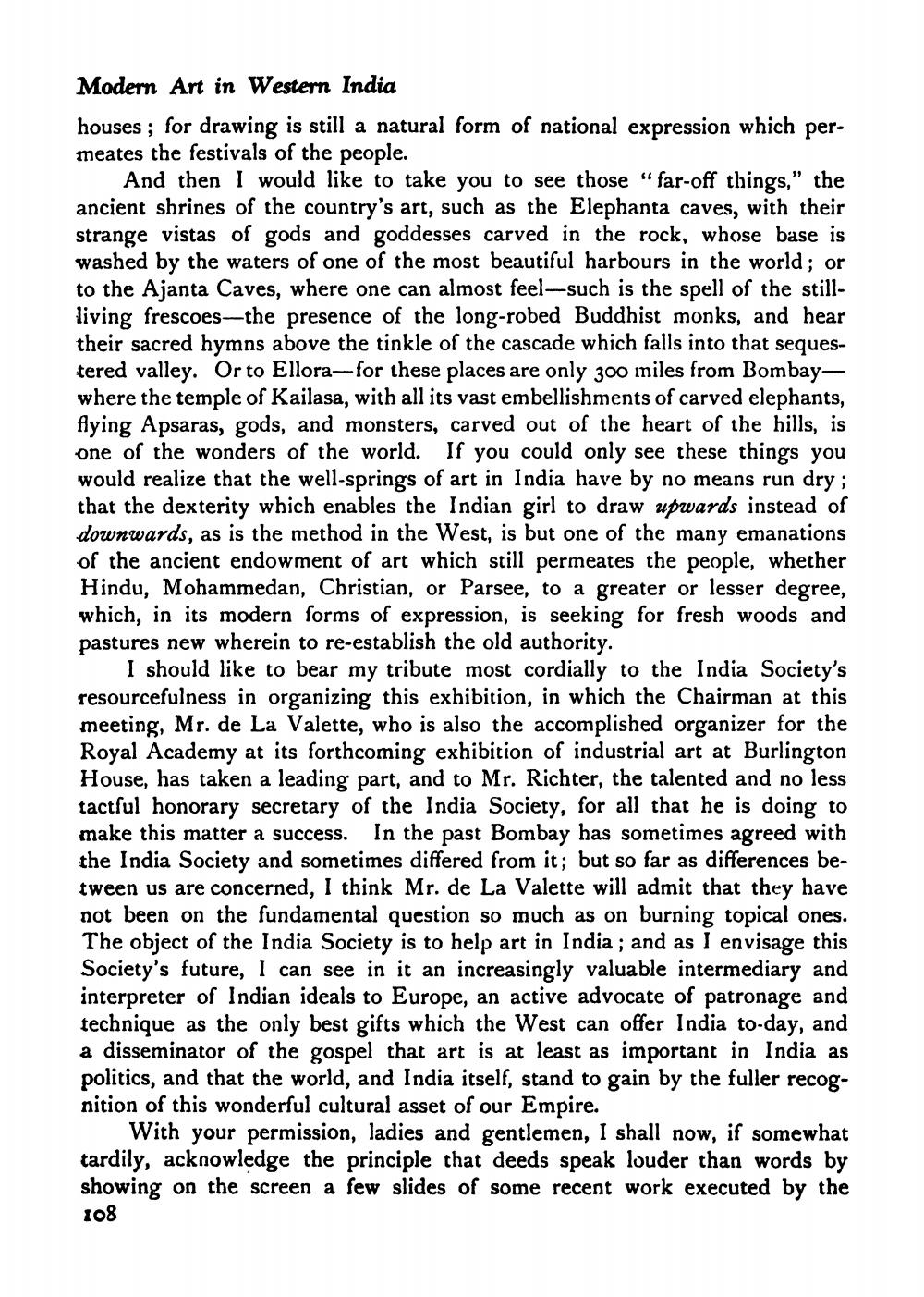________________
Modern Art in Western India
houses; for drawing is still a natural form of national expression which permeates the festivals of the people.
And then I would like to take you to see those "far-off things," the ancient shrines of the country's art, such as the Elephanta caves, with their strange vistas of gods and goddesses carved in the rock, whose base is washed by the waters of one of the most beautiful harbours in the world; or to the Ajanta Caves, where one can almost feel-such is the spell of the stillliving frescoes-the presence of the long-robed Buddhist monks, and hear their sacred hymns above the tinkle of the cascade which falls into that sequestered valley. Or to Ellora-for these places are only 300 miles from Bombaywhere the temple of Kailasa, with all its vast embellishments of carved elephants, flying Apsaras, gods, and monsters, carved out of the heart of the hills, is one of the wonders of the world. If you could only see these things you would realize that the well-springs of art in India have by no means run dry; that the dexterity which enables the Indian girl to draw upwards instead of downwards, as is the method in the West, is but one of the many emanations of the ancient endowment of art which still permeates the people, whether Hindu, Mohammedan, Christian, or Parsee, to a greater or lesser degree, which, in its modern forms of expression, is seeking for fresh woods and pastures new wherein to re-establish the old authority.
I should like to bear my tribute most cordially to the India Society's resourcefulness in organizing this exhibition, in which the Chairman at this meeting, Mr. de La Valette, who is also the accomplished organizer for the Royal Academy at its forthcoming exhibition of industrial art at Burlington House, has taken a leading part, and to Mr. Richter, the talented and no less tactful honorary secretary of the India Society, for all that he is doing to make this matter a success. In the past Bombay has sometimes agreed with the India Society and sometimes differed from it; but so far as differences between us are concerned, I think Mr. de La Valette will admit that they have not been on the fundamental question so much as on burning topical ones. The object of the India Society is to help art in India; and as I envisage this Society's future, I can see in it an increasingly valuable intermediary and interpreter of Indian ideals to Europe, an active advocate of patronage and technique as the only best gifts which the West can offer India to-day, and a disseminator of the gospel that art is at least as important in India as politics, and that the world, and India itself, stand to gain by the fuller recognition of this wonderful cultural asset of our Empire.
With your permission, ladies and gentlemen, I shall now, if somewhat tardily, acknowledge the principle that deeds speak louder than words by showing on the screen a few slides of some recent work executed by the 108




